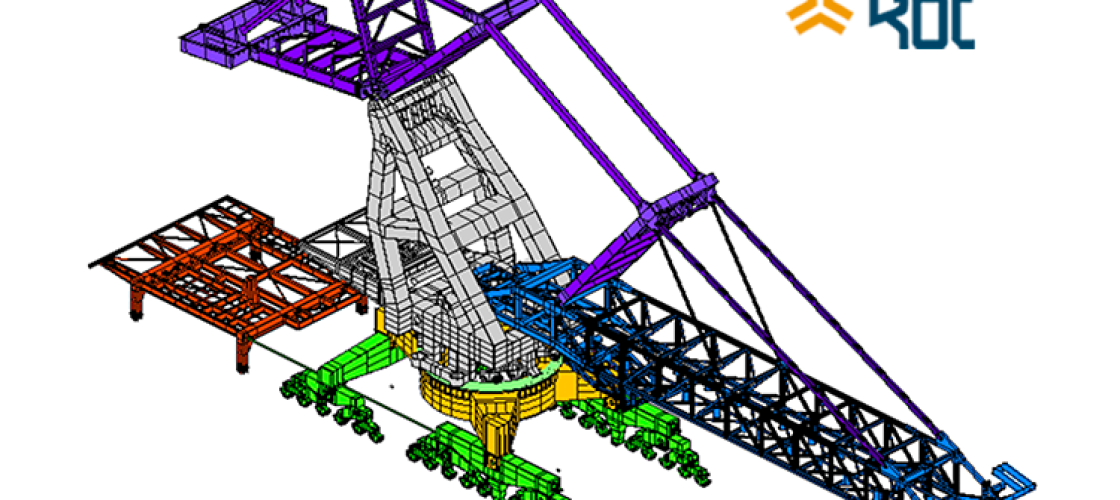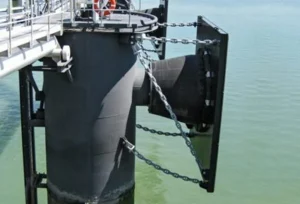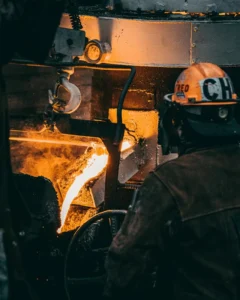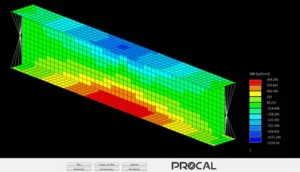Structural analysis of yard machinery using the finite element method (FEM) is an important tool in promoting the asset's Structural Integrity . It can be applied, for example, to check for possible design flaws, investigate unforeseen/unknown phenomena and provide technical support for maintenance planning.
To find out more about this method applied to large bulk handling yard machines, learn about a successful case from Kot Engenharia in this article. And to review the basics of FEM, check out this article: Understanding the Finite Element Method.
Structural analysis of an ore reclaimer
Kot carried out the structural validation, using the finite element method, of a bucket wheel reclaimer with an approximate mass of 1,800 tons and a process capacity of approximately 11,000 tons/hour. It is one of the assets responsible for handling iron ore(sinter and pellet feed) at a customer's plant.
Analysis using the finite element method begins with computer modeling of the asset in CAE(Computer Aided Engineering) software. In the software environment, it is possible to generate a three-dimensional model, accurately reproducing the geometry of the asset. Figure 1 below shows the generated model of the Reclaimer and its component division.

Figure 1: Finite element model of the reclaimer - SOURCE: Kot Collection.
Figure 2, on the other hand, shows a different representation, indicating the shell and bar elements used to create this model.
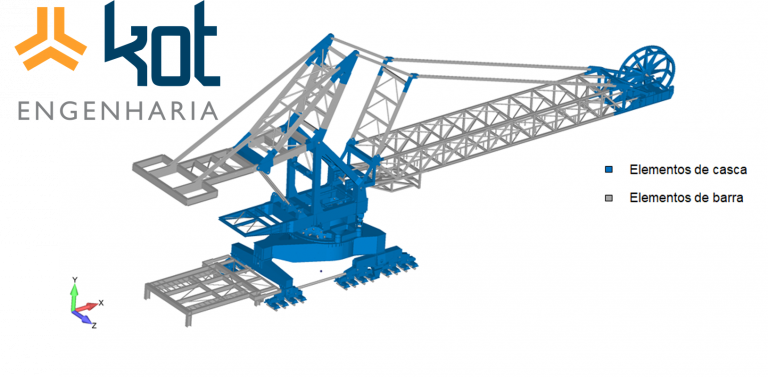
Figure 2: Location of the shell and bar elements in the reclaimer model - SOURCE: Kot Collection.
Yard machines of this type work under high load rates, from the equipment's own weight, wind loads and operating loads. Analysis using FEM allows these loads to be discretized and applied to the structural arrangement of the equipment. Based on the loads applied, static, fatigue, buckling, connection, stability and modal analyses are carried out. The results are interpreted according to the criteria established by standards.
In the static analysis of the reclaimer in question, specific normative criteria were adopted for the elements under different stress envelopes and utilization indices (UI) for each loading combination. In the analysis of the bar elements, no utilization indices above the admissible level were found. In the analysis of the shell elements, it was observed that, in certain regions of the bracing, the UIs of the structure exceeded the normative values, as shown in Figure 3.

Figure 3: Plot of the structure's utilization rates in the static analysis - SOURCE: Kot Collection.
The fatigue analysis used the normative evaluation methodology for a defined design life and load cycles. At this stage, it was considered that the equipment loaded with ore was subjected to operating movements such as tilting, translation and rotation. As a result, regions with maximum UIs within the permissible range were observed in the region of the machine portal, as shown in Figure 4.
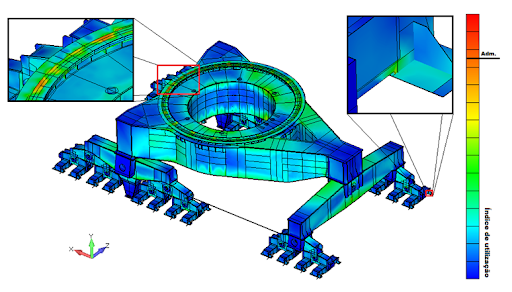
Figure 4: Plot of the structure's utilization rates in the fatigue analysis - SOURCE: Kot Collection.
In the local buckling analysis of the main plates of the ore reclaimer, the permissible stresses were checked according to the established criteria. These regions are typically stressed by compressive loads, which can generate the effect of local elastic failure of certain components. In this reclaimer, the regions were analyzed and checked considering the stresses, material parameters and boundary conditions. The results found were within acceptable limits.
The connections were analyzed according to pre-established normative criteria using the analytical method. The importance of checking the connections should be emphasized, given the types of connection found in the equipment, whether rigid, flexible or pinned. The calculated results were also below the permissible utilization rates. Some of the connections are shown in Figure 5.
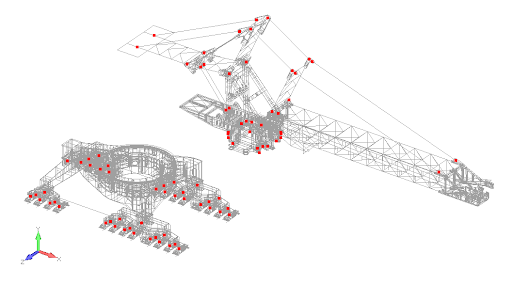
Figure 5: Pinned connections of the equipment - SOURCE: Kot Collection.
The modal analysis assessed the possibility of resonance of the structure, taking into account the sources of excitation, such as wind and rotating elements of the equipment. The analysis checked the risk frequencies for different modes of natural vibration of the equipment. In one of the modes, the risk of resonance from some rotating elements of the equipment's conveyor belt was identified - with a warning. One of the equipment's natural vibration modes can be seen in Figure 6.

Figure 5: Pinned connections of the equipment - SOURCE: Kot Collection.
Finally, points of concern and the need for inspections during maintenance of the asset were indicated. Despite the fact that some utilization rates were higher than admissible, it was not necessary to propose reinforcements for the structure.
When solving engineering problems using the finite element method, it is necessary to know the standards that establish the appropriate criteria for each type of analysis, as well as to properly define the boundary conditions, constraints, mass and position of non-modeled components. In addition, it is necessary to measure and analyze the stresses to which the equipment is subjected throughout its useful life. With this calculation method, development and evaluation with high reliability is promoted, especially from the perspective of the asset's Structural Integrity .
Kot Engenharia has the experience and resources needed to carry out structural simulations of yard machinery, as in the case reported in this article. Contact our team for more information!
Follow our pages on LinkedIn, Facebook e Instagram to keep up with our content.
